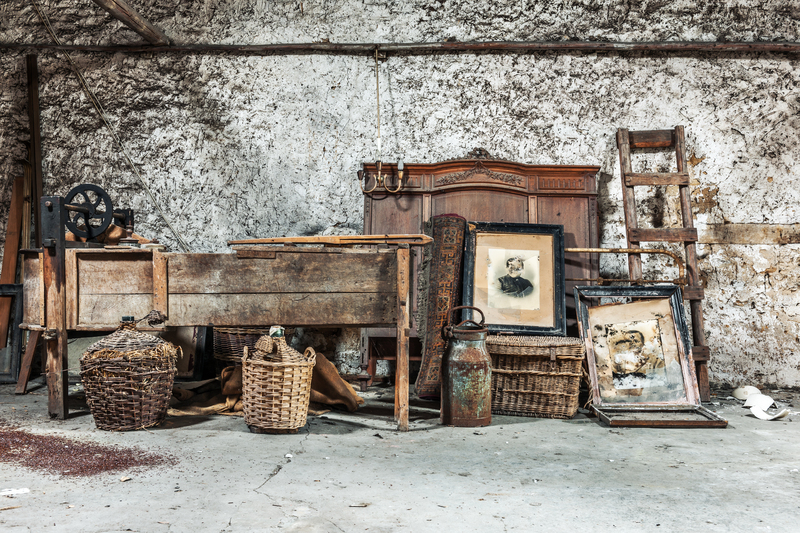Step-by-Step Approach to Packing When Relocating
Posted on 02/06/2025
Your Comprehensive, Step-by-Step Approach to Packing When Relocating
Moving to a new home or office can be both exciting and overwhelming. One of the most crucial aspects for a successful move is knowing the right step-by-step approach to packing when relocating. A well-structured packing plan not only saves you time and stress, but also ensures your cherished belongings arrive safely at your new destination. This comprehensive guide will walk you through each stage of the packing process, offering expert tips and practical advice for a smooth relocation.

Why a Structured Packing Strategy is Essential for Moving
Packing for a move without a clear strategy can lead to lost or damaged items and can make unpacking at the new location a nightmare. Employing a systematic approach helps you:
- Minimize moving stress
- Reduce the chances of losing or damaging your belongings
- Save time and effort both while packing and unpacking
- Stay organized throughout the relocation process
Initial Preparation: Setting the Stage for an Efficient Move
1. Establish a Packing Timeline
Planning ahead is the cornerstone of any successful relocation. Ideally, you'll want to start organizing your packing schedule several weeks before the moving day. Here is a suggested timeline:
- 6-8 weeks before: Start sorting and decluttering each room. Identify items for donation, sale, or disposal.
- 4-6 weeks before: Gather packing supplies. Begin packing non-essential items.
- 2-4 weeks before: Pack infrequently used items and off-season clothes.
- Final week: Pack essential and everyday items. Prepare an essentials box for the first night in your new place.
2. Inventory Your Belongings
Creating a comprehensive inventory is a vital part of the step-by-step approach to packing when relocating. This process helps you keep track of your belongings and make sure nothing gets left behind. Use a spreadsheet or a moving app to record:
- The content of each room
- Valuable and fragile items
- Boxes by category (kitchen, bedroom, electronics, etc.)
3. Gather High-Quality Packing Supplies
Invest in quality packing materials to safeguard your possessions. Essentials include:
- Sturdy boxes of various sizes
- Bubble wrap and packing paper for protection
- Packing tape and scissors
- Markers and labels for box identification
- Stretch wrap for securing furniture
- Specialty boxes for fragile and valuable items (e.g., wardrobe boxes, dish packs)
Decluttering: Simplify Before You Start Packing
An essential packing tip for relocating is to declutter before placing anything in boxes. This minimizes the quantity of items to pack and move, saving both time and cost.
How to Declutter Efficiently
- Room-by-Room Assessment: Go through each room and identify what you use regularly and what you can part with.
- Sort Into Four Categories: Keep, Donate, Sell, Discard. Clearly label piles or use colored bins to differentiate.
- Host a Yard Sale: Sell unneeded but valuable items to make some extra cash for moving expenses.
- Donation Options: Many local charities accept gently-used furniture, clothes, and household goods.
- Dispose Responsibly: Use recycling centers and proper disposal for unsellable, non-donatable, or hazardous items.
Packing by Category: The Ultimate Room-by-Room Guide
1. Packing Bedroom Items
- Clothing: Use wardrobe boxes for hanging clothes to prevent wrinkles. Fold others in suitcases or sturdy boxes.
- Bedding: Place sheets, blankets, and pillows in large plastic bags or boxes. Label them clearly.
- Personal Items: Secure valuables like jewelry in padded containers. Keep important documents in a separate, easy-to-access file.
2. Kitchen Packing Approach
- Glassware and Dishes: Wrap each piece with bubble wrap or packing paper, and use dividers if available.
- Perishables: Consume or donate food items before packing. Avoid taking perishables on long moves.
- Appliances: Pack small appliances in their original boxes if possible, with cords removed and accessories packed together.
3. Living Room and Electronics
- Books: Use small boxes for heavy items to prevent breakage and make lifting easier.
- Electronics: Take photos of wiring setups for easy reassembly. Use original packaging if available for TVs, stereos, and computers.
- Decorative Items: Wrap in bubble wrap and cushion with packing paper or cloth.
4. Bathroom Packing Best Practices
- Liquids: Seal bottles with tape or place in resealable bags to prevent leaks.
- Medicines: Keep essential medications separately for easy access.
- Towels: Use to cushion fragile items in boxes.
5. Garage and Outdoor Equipment
- Tools: Bundle long-handled tools together. Drain fuels from equipment like mowers and trimmers.
- Outdoor Items: Clean and disassemble large items for easy transport.
- Hazardous Materials: Check regulations for safe disposal. Moving companies often won't transport these items.
Expert Packing Tips for Relocation Success
General Packing Do's and Don'ts
- Do: Clearly label each box with the room and contents for easy unpacking.
- Do: Seal boxes securely with quality tape to protect contents.
- Don't: Overpack boxes. Keep weight under 50 lbs whenever possible.
- Don't: Leave empty spaces in boxes; use towels or paper to fill gaps.
- Do: Place heavy items on the bottom, lighter ones on top.
- Do: Keep an inventory list for quick reference after your move.
How to Protect Fragile Items During Moving
- Double wrap delicate items in bubble wrap or packing paper.
- Use smaller boxes for breakables to minimize movement.
- Mark boxes as "Fragile" on all sides.
- Layer the bottom of boxes with padding for extra protection.
Efficient Labeling: The Key to Organized Moving
As part of your step-by-step packing for moving, effective labeling can save hours when you unpack. Here's how to do it right:
- Color Code: Use colored tape or labels for each room (e.g., blue for bathroom, green for bedroom).
- List Contents: Write a brief list of contents on the side of each box.
- Numbering: Assign numbers to boxes and cross-reference with your inventory list.
- Highlight Essentials: Clearly mark boxes you'll need immediately upon arrival, like bedding or kitchen utensils.
Essential Packing Techniques to Maximize Space and Safety
Residential and commercial moves both benefit from smart packing techniques:
- Disassemble furniture when possible, and keep hardware in labeled plastic bags taped to parts.
- Bundle loose items (e.g., cords, utensils) in secure packets.
- Stack boxes with the heaviest at the bottom and lightest at the top during loading.
- Leave pathways in your home for easy navigation on moving day.
Packing an Essentials Box - Your First-Night Survival Kit
Your essentials box should include everything you'll need during the first 24-48 hours in your new place. Pack items such as:
- Toiletries and medications
- A change of clothes
- Chargers and electronics
- Basic kitchen supplies (coffee, snacks, utensils, can opener)
- Bedding and towels
- Basic cleaning supplies
- Important documents
Label this box clearly and carry it with you on moving day for easy access!
Step-by-Step Approach to Packing When Relocating with Children and Pets
Tips for Families
- Involve kids in packing their own rooms - it helps them feel included.
- Let children decorate their moving boxes for easy identification.
- Pack a separate bag with your kids' favorite toys, books, and comfort items.
Packing Tips for Pet Owners
- Pack a separate bag for pet food, treats, and essentials.
- Set aside a secure space for your pet on moving day.
- Keep vaccination and vet records handy for the transition.
Professional Movers vs. DIY Packing: Making the Right Choice
Should you pack yourself or hire movers for a full-service solution? Both options have merits:
- Professional packing services save time and energy and provide expert handling, especially for fragile or valuable items.
- DIY packing gives you full control, can save money, and allows personal customization of what goes where.
Consider your budget, timeline, and the complexity of your move when deciding the best packing approach for your relocation.

Final Checks and Moving Day Preparation
- Walk through each room to make sure nothing is left behind.
- Confirm moving details with your transportation company or helpers.
- Double-check boxes are securely sealed and clearly labeled.
- Keep personal documents and valuables with you, not in the moving van.
Conclusion: Your Stress-Free, Step-By-Step Packing Solution
A meticulous step-by-step approach to packing when relocating turns an overwhelming task into a series of manageable steps. By starting early, organizing your belongings, using the right materials, and employing proven packing techniques, you can ensure your move is smooth and hassle-free. Whether you're moving across town or across the country, organization and preparation are key to a successful transition. Bookmark this guide to make your next move as seamless and stress-free as possible!
- Remember: The more structured your planning, the more enjoyable your moving experience will be. Happy packing!



